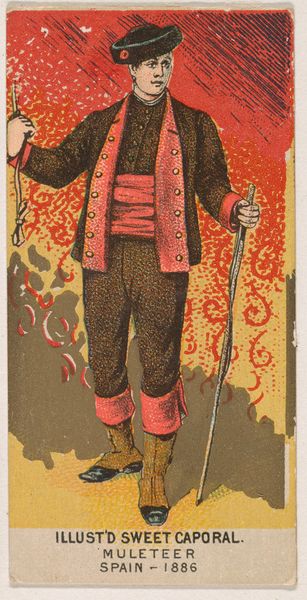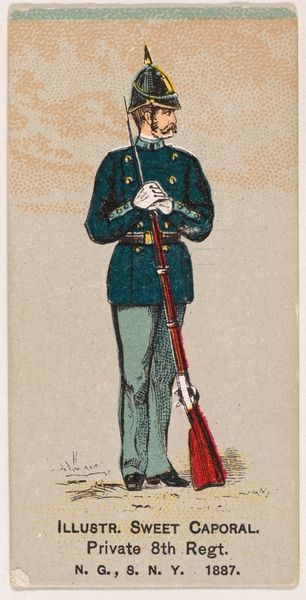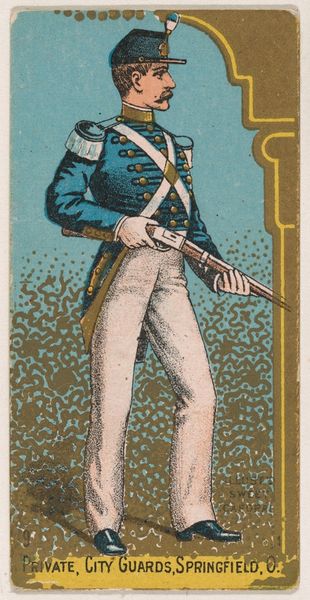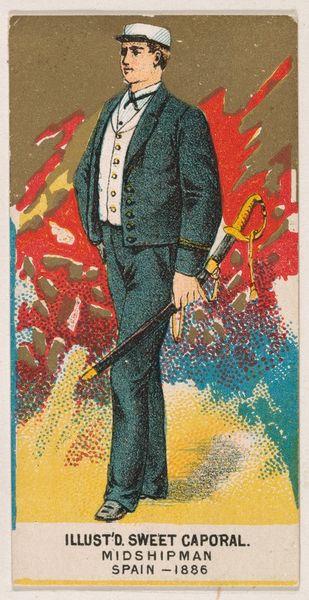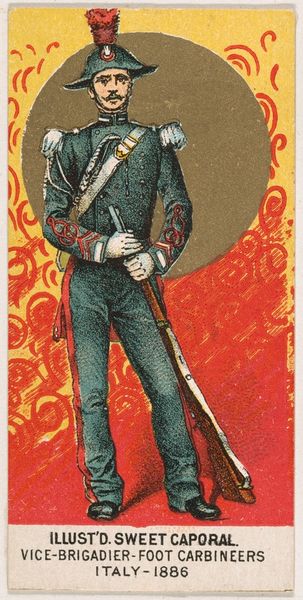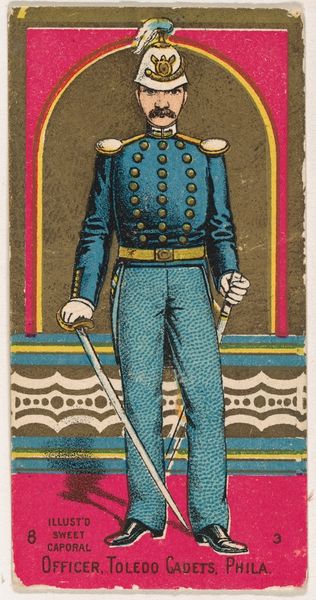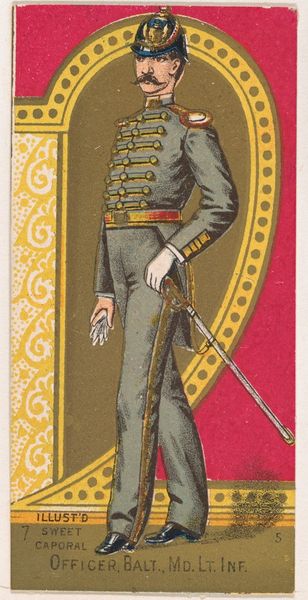
Officer of Cavalry, Italy, from the Military Series (N224) issued by Kinney Tobacco Company to promote Sweet Caporal Cigarettes 1888
0:00
0:00
drawing, print
#
portrait
#
drawing
# print
#
caricature
#
caricature
#
genre-painting
#
academic-art
Dimensions: Sheet: 2 3/4 × 1 1/2 in. (7 × 3.8 cm)
Copyright: Public Domain
Curator: This small printed drawing from 1888 depicts an Italian cavalry officer. It's part of a military series issued by the Kinney Tobacco Company, promoting Sweet Caporal Cigarettes. Editor: Oh, fascinating! It immediately strikes me as…nostalgic, yet slightly satirical. There’s a real stiffness in his posture, an almost theatrical pride that feels performative, considering the context. Curator: It’s a striking image to place on a cigarette card, isn't it? Consider the cultural currents at the time – a rising tide of nationalism coinciding with mass consumerism. The company uses this officer as a symbol, associating their brand with ideals of nationhood and military strength. Editor: And the symbolic power of the uniform itself. The elaborate braiding and the sword hint at both authority and a romanticized vision of military life. Those stars and details likely carry their own distinct regional or rank-specific meaning. Curator: Exactly. Every element communicates something specific about Italian identity. Though reproduced on a tiny scale, it still aims for grandeur through carefully rendered details. Think about the visual impact on a potential smoker: this officer represents honor, and smoking Caporals somehow partakes in that honor. Editor: I’m wondering, too, how widespread such imagery would have been in Italy itself. Was this idealized depiction aimed more at American consumers, or was it equally influential back in the depicted nation, shaping the collective idea of national pride on both continents? Curator: That’s an excellent question, it really underscores how mass-produced imagery travels and shapes perceptions across different contexts and audiences. It might play into the popular fascination with military figures and exotic cultures prevalent in the late 19th century. It collapses distance, offering a bite-sized, easily consumed image of faraway grandeur. Editor: It does prompt deeper reflection on how such mass-produced images worked—and still work—to build specific socio-cultural narratives. It speaks to a specific vision, consciously presented and curated, often by people completely separate from its subject. It’s a perfect lens through which we may investigate how the politics of imagery shaped understandings of national identity and its associated aspirations. Curator: Yes, and considering how fleeting a cigarette card is meant to be, it really proves how powerfully even ephemeral objects can communicate values and beliefs, influencing generations with their subtle suggestions. Editor: Absolutely. This small cardboard figure truly shows that it's not the size of the symbolic expression that counts, but the density of encoded values and associations.
Comments
No comments
Be the first to comment and join the conversation on the ultimate creative platform.




